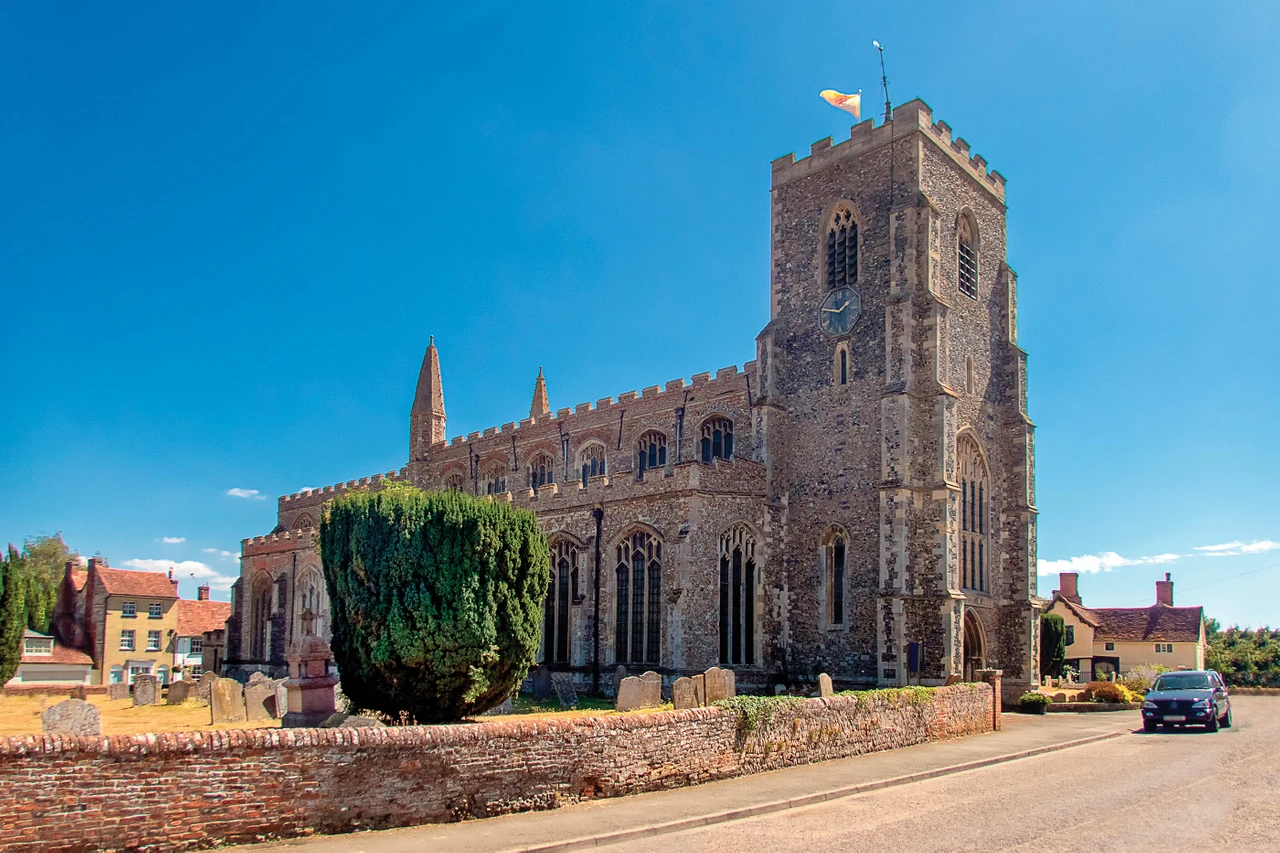Explore Britain with a fresh set of eyes, aided by the experts from Bradt Travel Guides, who’ve personally curated these 30 lesser-known delights…
1. Ross Back Sands, Northumberland

This gloriously deserted sandy spit extends for 5km from Budle Bay to Lindisfarne. Access is via a 1.5km-long footpath through Ross Farm and across the dunes, which puts off the few travellers who venture here.
Your reward, however, is an unbeatable panorama: all sky, sea and white sands with Lindisfarne Castle at one end and, at the other, Bamburgh Castle and the Farne Islands. A pair of binoculars will come in handy, not only to check out the seals lazing on Lindisfarne’s bay (best viewed from Guile Point) but also to scan the sea for divers, grebes and scoters in winter, and terns in summer.
2. Walberswick, Suffolk

Walberswick was formerly a small trading port before its harbour silted up. Long adopted as a bohemian retreat by artists like Philip Wilson Steer and Charles Rennie Mackintosh, the former fishing village has long-since morphed into a enclave for media-types.
These days it is popular with walkers and birdwatchers, and young families who come here to relax and go crabbing in the creek. The most atmospheric way to reach Walberswick, though, is by way of the rowing-boat ferry across the River Blyth from Southwold, an enterprise that’s been in the same family for five generations.
3. Carn Euny, Cornwall
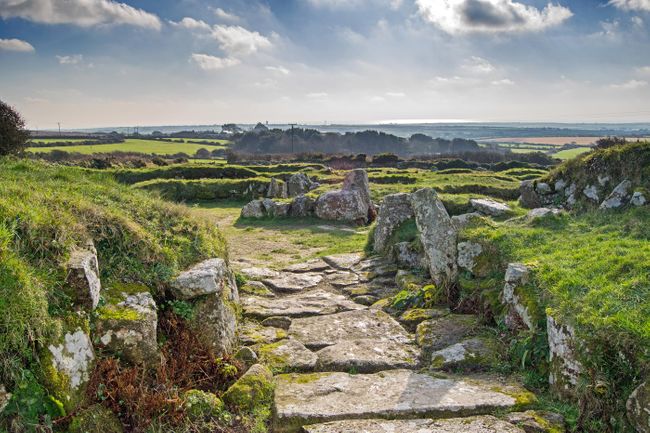
Although this ancient hut settlement is managed by English Heritage, the sense of private discovery is overwhelming. To get here, it’s an easy walk from Chapel Carn Brea car park north-east over Tredinney Common past a very natural, gurgling holy well that marks the site of St Euny’s Chapel.
The low stone walls of the roundhouses are clearly visible, beneath a soft blanket of turf and wildflowers and the entrance to a mysterious fogou (underground structure) is also apparent. This remote and beautiful acre lies on a south-facing slope; it’s a place to linger, maybe with a picnic and a jug of local cider.
4. Hunstanton, Norfolk
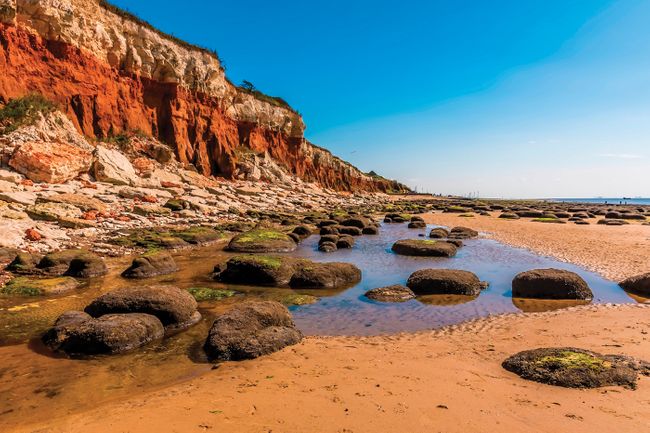
Standing a short walk along the beach from the Victorian resort of Hunstanton (‘Sunny Hunny’) are the magnificent banded cliffs of Old Hunstanton. The cliffs, which are comprised of layers of rusty ginger sandstone (‘carrstone’), red limestone (‘red chalk’) topped with chalk, are framed by a foreground of chalky sand and green, seaweed-covered rocks.
Unusually – actually, uniquely – for East Anglia, they face west. With the setting sun lighting up the cliffs as it lowers across The Wash, and a painterly combination of red, white, green and blue, this is the sort of place that holds great appeal for romantics and landscape photographers alike.
5. Sunbiggin Tarn, Cumbria
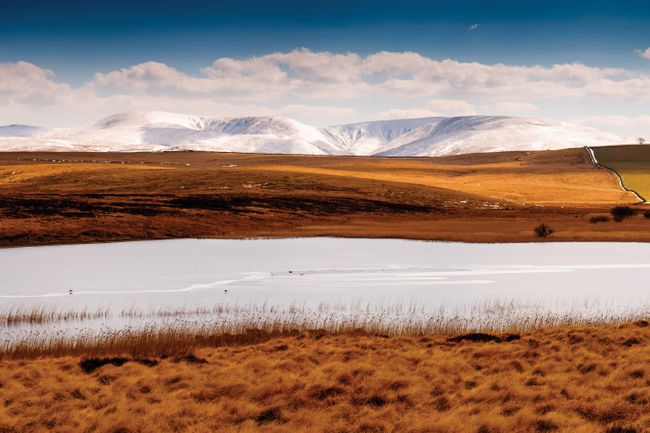
Lakes of any size are very thin on the ground in the Yorkshire Dales National Park. Sunbiggin Tarn’s rarity makes it popular with wildlife and visiting humans alike.
Interesting birds can be seen here all year around but this place’s greatest claim to fame is probably its starling murmurations. One of the country’s largest and most spectacular, it involves tens of thousands of birds and occurs here at dusk on most autumn and winter evenings.
6. Yoesden Nature Reserve, High Wycombe

Six miles north of High Wycombe, Yoesden has changed little since medieval times. Descending from ‘beech hanger’ woods, its sun-soaked chalk grassland provides a haven for less common flora and fauna.
In late June, it’s a pink and purple picture with chalk fragrant, pyramidal and common spotted orchids. By August, blue is the colour with devil’s bit scabious, nettle-leaved bellflower and lots of Chiltern gentian attracting butterflies – keep an eye out for the azure Adonis blues and the powdery chalk hill blues as well as the common blue and small blue varieties. Open daily, and free to visit.
7. The Grey Mare’s Tail Nature Reserve, Dumfries & Galloway
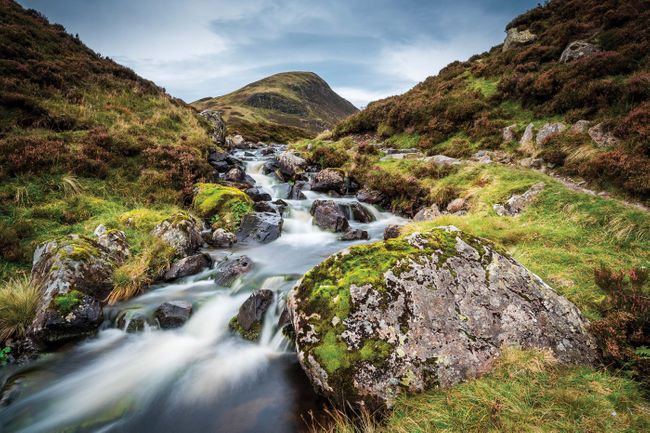
The wild and rugged landscape of this National Trust for Scotland reserve in Dumfries & Galloway is a taste of the highlands in the lowlands. The 60m Grey Mare’s Tail waterfall is the UK’s fifth highest; a walk up alongside it will eventually bring you to isolated Loch Skeen and Britain’s rarest native freshwater fish, the vendace.
Continue climbing to the top of White Coomb (821m), Dumfriesshire’s highest peak for inspirational views to the Scottish Borders and even beyond if the weather goes in your favour. Look out for peregrine falcons, osprey and, if you’re lucky, golden eagle, which have been reintroduced in recent years.
8. Solar Heritage boat tours, West Sussex
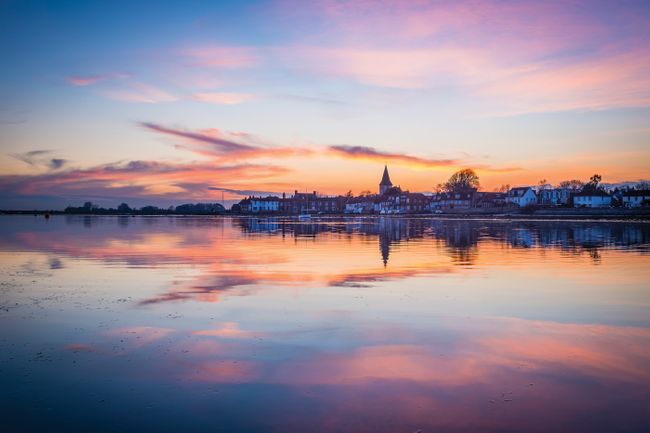
The catamaran was powered by nothing else but the sun, gliding across through the marshy waterscape of Chichester Harbour in West Sussex’s south-west corner.
“She’s quiet, doesn’t scare wildlife, uses no oil or lubricants and doesn’t cause wake,” explained our guide, as binoculars were passed around to my fellow passengers to spot the abundant birdlife and wait for a glimpse of its couple of dozen resident seals.
The craft is one of only three, built to ferry people to an exhibition of alternative energy sources held in Switzerland and now-recycled here to spectacular effect. Surely the ultimate form of Slow Travel? Costs £10 per adult.
9. Birkenhead Park, Wirral
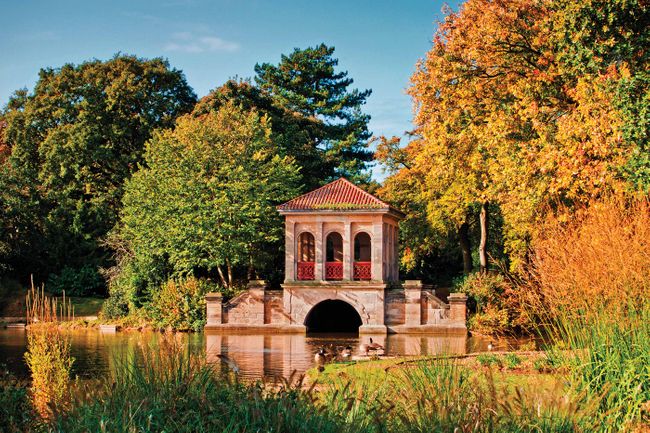
The port of Birkenhead on Wirral was a town of firsts in the 19th century, including being home to the world’s first publicly funded park.
But Birkenhead Park, a naturalistic 100 acres of meadows, fields, gardens, woodland, lakes and structures, has another boast. It inspired the American landscape architect Frederick Law Olmsted in his design of New York’s Central Park.
Birkenhead Park isn’t the only Victorian joy of this peninsula. Wirral’s other secrets include the industrial garden village of Port Sunlight, Ness Botanic Gardens (which introduced the rhododendron to Britain’s borders) and pretty Parkgate village, with its now landlocked seafront promenade.
10. The Strawberry Line, Somerset
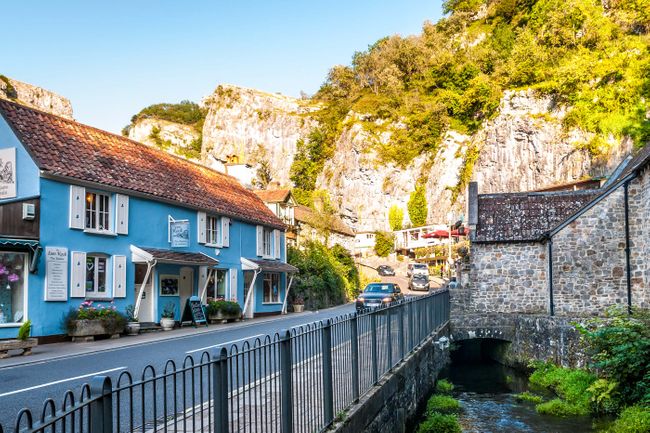
Wending its way through a scenic stretch of Somerset countryside, the Strawberry Line takes its name from the railway that, until 1963, transported produce grown on the slopes of the nearby Mendips.
Walking or cycling the old, mostly traffic-free, trackbed – which extends for 16km between Yatton and Cheddar – you’ll pass rural villages, apple-rich orchards (this is cider country after all), wooded valleys and wetlands teeming with wildlife, including otters, owls, bats and butterflies.
There are plenty of pitstops along the way too, not least the brilliant, not-for-profit Strawberry Line Café, which now occupies the old Victorian-era waiting room at Yatton station; handily, they also offer bike hire.
11. Amberley Museum, West Sussex

Close to the South Downs Way and right next to Amberley rail station, this serendipitous museum is, variously, a huge industrial relic; a nature reserve within a chalk pit patrolled by peregrine falcons; a community of craftspeople; and a collection of all sorts representing industry in the south-east over the centuries.
Each visit will sidetrack you with something new: nosing round the printworks and the transplanted Southdown Bus Garage, or chatting to the woodturner. Finish the day with an amble around Amberley, with its astonishing show of thatched roofs, and a medieval castle (now a hotel) looking out onto the water meadows known as Amberley Wildbrooks. Open Wednesday to Sunday, £13.60 per ticket.
12. Hartland Abbey, Devon
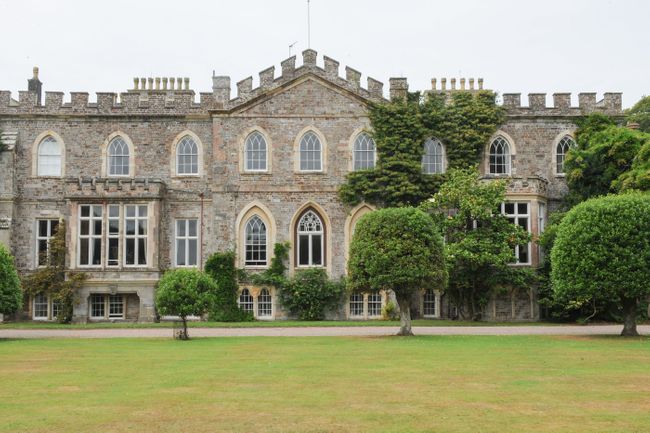
Far superior to many other great houses, which sometimes struggle to justify their entrance fee, Hartland Abbey (open Sunday to Thursday until 4 October) is still owned by the family that inherited it in the 16th century.
It has a lived-in feeling (you are likely to find a family member working in the walled garden) and the quality of the contents is one of the advantages of a house that has never been sold, but passed down through the centuries by inheritance. Scattered around the house are laminated newspaper cuttings that add snippets of intrigue…
13. Cotswold Line Cycle Route
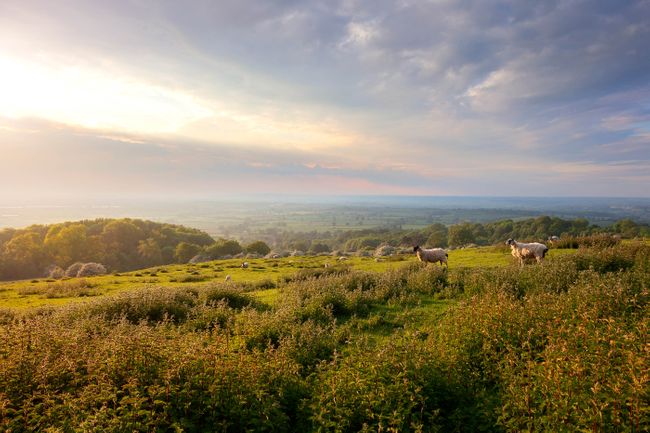
For quiet, tiny lanes that are perfect for gentle moseying on a bicycle, the Cotswolds is in abundance. And 120km of these lanes make up the Cotswold Line Cycle Route (NCN Route 442), which follows the Cotswold Line railway between Oxford and Worcester, so you can cycle as far as you like, then catch the train back (or vice versa).
There’s plenty to view along the route, as it winds its way through peaceful stone villages with rose-hugging frontages and reputable gastro-watering holes (many currently offering a takeaway service). Take Kingham or Charlbury, for example, in the Oxfordshire Cotswolds, or the market town of Moreton-in-Marsh, all with a train station to boot.
Further north, head towards Chipping Campden, with tearooms-aplenty and the glory of Dover’s Hill for a picnic with views, to catch the return train in nearby Honeybourne.
14. Lundy Island, Devon
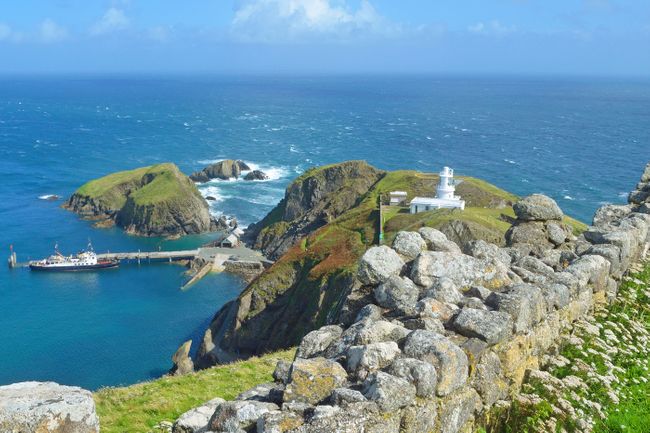
Marooned in the middle of the Bristol Channel and often cut off for days through bad weather, this island feels like a lump of the Hebrides mysteriously dumped in the south-west. It is a wild, beautiful and almost treeless place, with a tiny resident population, no cars, a lot of sheep, cattle and ponies, and kilometres of footpaths.
The chief attraction is the cliffside breeding puffins (best see April to July), but the chance to get away from it all ensures that few visitors only come here once. All the accommodation is self-catering in historic properties, including a castle and a lighthouse, now owned by the Landmark Trust.
15. Hawkstone Park Follies, Shropshire
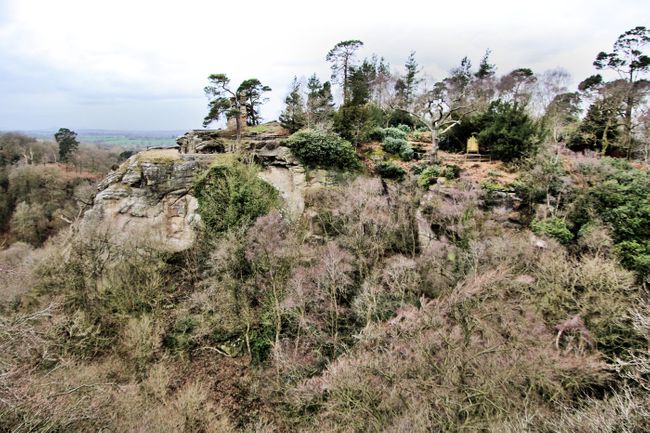
If you’ve never before visited Hawkstone Park Follies, we envy you your first glimpses of this mysterious place. The restored 200-year-old pleasure garden is an exhilarating mix of sandstone cliffs and crags, dotted with dozens of follies originally created by the Hill family of Hawkstone.
Ascend the 150 steps of the 30m-high monument, raised in 1795, and you’ll have views over 12 or 13 counties. Its dramatic scenery made Hawkstone Park a location for the BBC’s 1988 adaptation of The Chronicles of Narnia, and it remains highly recommended for children (and grown ups) who enjoy exploring – although wear sturdy shoes. Open only on weekends, £19 (for one household, up to three in a car).
16. Natural History Museum, Tring, Hertfordshire
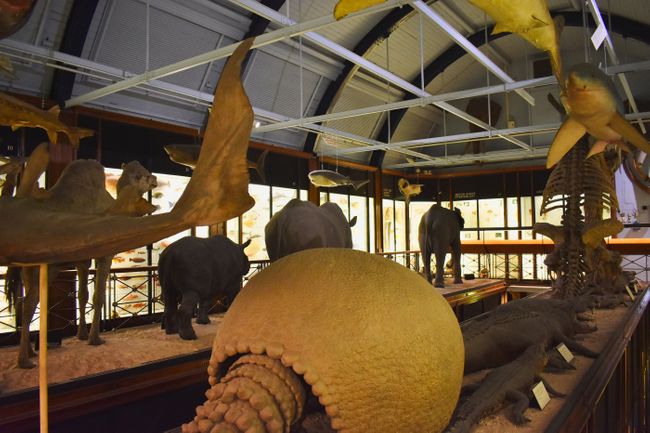
This outpost of London’s Natural History Museum has been a visitors’ delight for over a century. Six floors showcase 4,000 specimens on public display in taxonomic order, classified into related groups: stuffed birds and animals, menacing sharks hanging from the ceiling, insects in pull-out cases and plenty more.
You can wonder at the skeletons of long-dead creatures, such as the giant ground sloth from the Pleistocene era, or examine a set of fully dressed fleas (clothes made in Mexico in 1905). It’s free to visit, and open daily.
17. South West Coastal 300, Dumfries & Galloway (mostly)
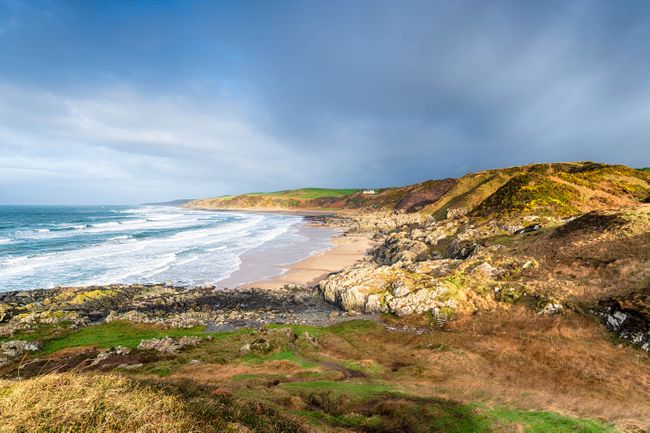
Scotland’s ‘forgotten south-west corner’ has its own version of the hugely successful North Coast 500 road trip. The South West Coastal 300 includes the hill country of the Southern Uplands and craggy coast of the Solway Firth.
A combination of Burns, the national bard, and a dram or two in various distilleries along the way makes for a heady mix. Visit Scotland’s most southerly point, the Mull of Galloway, and pan for gold in its highest village, Wanlockhead, also home to the country’s highest micro-brewery, with the cracking strapline of ‘Beer with Altitude!’
18. Chinnor & Princes Risborough Railway, Oxfordshire
Teams of devoted volunteers have restored this attractive heritage railway line, which runs on a combination of diesel and steam some of the locomotives date back to the 1930s.
Sit back and enjoy a pot of tea as your 50-minute round journey passes Whiteleaf Cross, a white cross of mysterious origins etched into the hillside. Special events include a ‘titfer day’ (half price for anyone wearing a hat) and Sherlock Holmes murder mystery evenings with supper on board. Open Sundays and bank holidays.
19. Skipton Castle, North Yorkshire
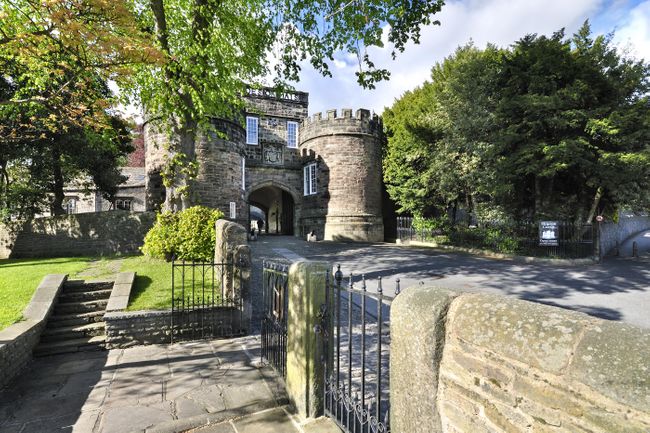
Many visitors to Skipton are not even aware there’s a 900-year-old castle here as it’s so well hidden, but there is and it’s a cracker. What makes it so special is its completeness; it is a fully roofed and remarkably well-preserved medieval building, a fact for which we have one woman to thank – Lady Anne Clifford.
After the castle’s destruction by Cromwell’s bully boys during the English Civil War, she had it completely rebuilt, and the yew tree she planted in 1659 to commemorate the event still graces the central courtyard. Open daily, £8.70 per ticket.
20. Clare, Suffolk
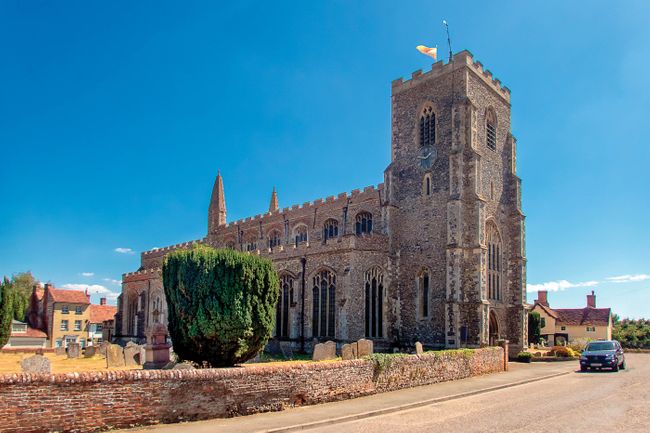
A fine medieval wool town in the Stour Valley, Clare is often overlooked.
Daniel Defoe, writing in the early 18th century, described it as ‘a poor town and dirty’ – these days it is anything but. Particularly striking is the 15th-century Ancient House, which has luxuriant white pargeting (decorative plastering) like the sugar icing on a fancy cake.
Directly opposite is St Peter and St Paul’s Church, a handsome perpendicular building in which Henry VIII and Catherine of Aragon have bespoke pews with their crests. The sundial outside, inscribed ‘Go about your business’, seems to tell the time with uncanny accuracy.
21. Blackgang Beach, Isle of Wight
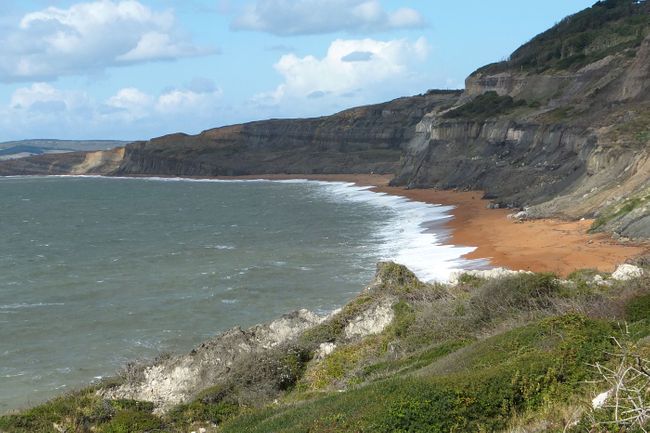
Quite simply, Blackgang Beach is a strong contender for the most beautiful – and rarely visited – of all the island’s beaches.
The reason for its low profile is clear enough: it is inaccessible to all but the most determined and reached by a steep, sometimes awkward (but never dangerous) path – which may also explain why it’s also the island’s unofficial nudist beach.
The walk from car park to beach takes around 15 minutes but can feel much longer. The reward is a glorious beach of ochre coloured, fine-gained pebbles (your feet sink ever so slightly as you cross the beach) that lies under a magnificent sandstone escarpment that looks like a vast slab of honeycomb.
22. St Martin’s Vineyard, Isles of Scilly
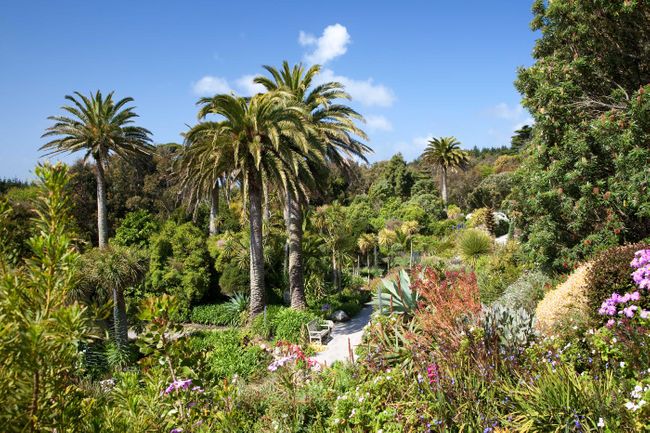
Established in 1996 by Val and Graham Thomas, this little-known vineyard is one of the island of St Martin’s best-kept secrets. Their wines have become a local triumph and, until only very recently, were only available on the Isles of Scilly themselves, either direct from their cellar or served in one of the many fantastic local pubs and restaurants.
The first vines trialled on this hectare of south-facing slopes were white varieties – Reichensteiner and Madeleine Angevine – but today five varieties are produced: three white, one rose and one red. Enjoy a tour and tasting session before stocking up on bottles to take home with you. Go for a self-guided tour, costing just £7.
23. Borth, Ceredigion
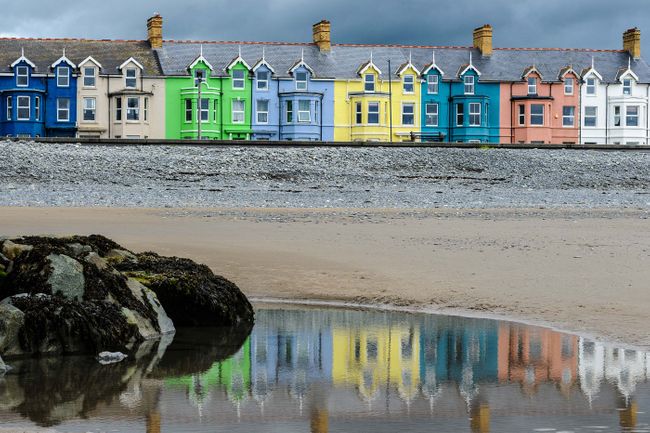
You get two wildlife spectacles for the price of one along this stretch of Welsh coastline in August.
On the beach at Borth, thousands upon thousands of Manx shearwaters – Britain’s answer to the albatross – gather here to feast upon shoals of whitebait, clupeid and sandeel. Some Manxies come stupidly close, occasionally even over the beach, so there are plenty of opportunities for photoshoots.
Just down the road at Cors Dyfi Reserve, admire another piscivore: Wales’ most famous ospreys. Assuming they have bred successfully, the pair’s youngsters should have fledged and be fattening up for their first southwards migration. Wish them – and the similarly migratory shearwaters – luck.
24. Flamborough Head, Yorkshire
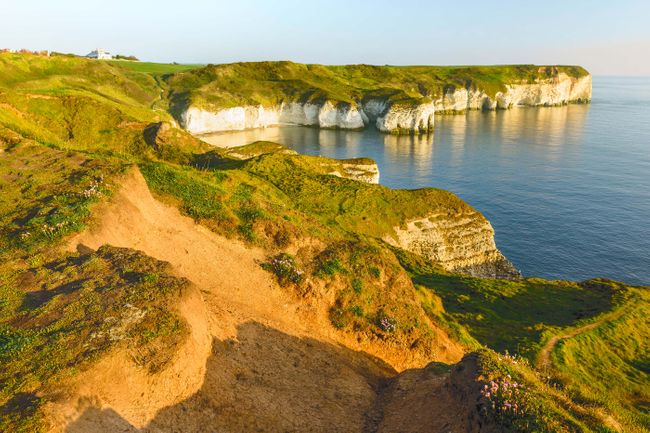
If asked to name the site of England’s oldest standing lighthouse, most northerly coastal chalk cliffs and largest seabird colony, very few people would plump for East Yorkshire, but Flamborough Head holds all three titles.
This promontory, sticking boldly out into the North Sea, has a rich Viking history which is easy to imagine whilst on an exciting boat trip through the tidal races below the cliffs. Being on the water allows a grandstand view of fishing gannets and puffins but those that would prefer to stay on dry land can occasionally spot whales from the clifftop viewpoints.
25. Mynydd Carningli, Pembrokeshire
Towering some 340m above the seaside town of Newport, this now-extinct volcano has a scrambly summit that just begs to be climbed. At the top you’ll find Iron and Bronze age remains, but that’s not the only selling point – for ‘Mynydd Carningli’ translates as ‘mountain of angels’.
Legend has it that Celtic saint St Brynach climbed to the top to commune with the angels. Although you don’t have to believe in seraphims to worship this saintly summit, go to the top and look towards the beautifully rugged Pembrokeshire coast to witness views that are truly angelic.
26. Chee Dale, Derbyshire
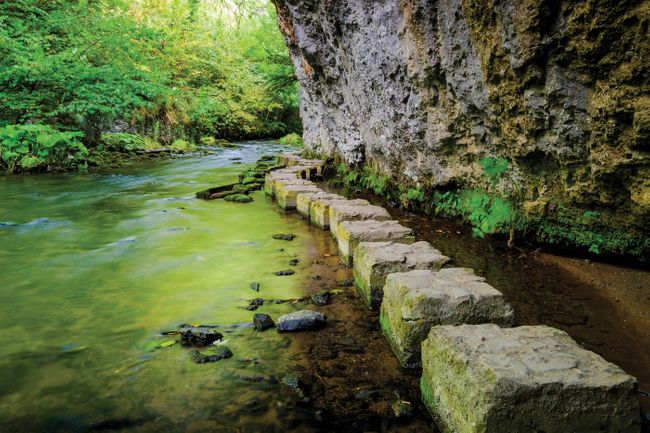
This must be a contender for loveliest riverside walk in the Peak District. And although it is every bit as dramatic as Dovedale, it receives a fraction of its visitors. Following the River Wye from Miller’s Dale car park, you wind your way west and south to Blackwell Mill (returning along the Monsal Trail).
The walk is one of pure delight: limestone cliffs drop straight to the water, great viaducts tower high overhead and boardwalks wind their way through wetlands of wildflowers, where dippers perch on branches and stones, bobbing in the water as they search for food.
27. Orkney’s Stone Age sites, Rousay Island
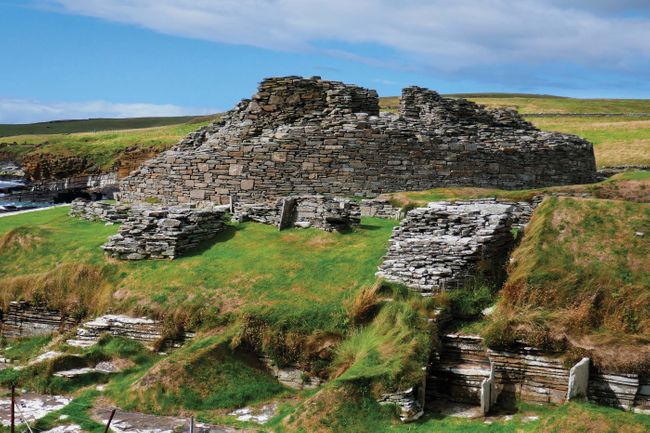
While the crowds flock to Skara Brae, the island of Rousay lies just to the north, waiting for the world to notice that it boasts more than 100 archaeological sites, including 15 chambered tombs, as concentrated a compendium of ancient monuments as anywhere in northern Europe.
Centre stage is the Westness coastline, considered the most important archaeological mile in Scotland, and its Midhowe chambered cairn, a huge communal burial chamber dating back thousands of years, and known as the Great Ship of Death. Close by, above wave-pounded ledges, is Midhowe Broch, one of Scotland’s best-preserved examples of these enigmatic Iron Age structures.
If you’re not tombed out, make for the Knowe of Yarso Cairn. The highest of Orkney’s tombs, the site offers views across Eynhallow Sound and the Orkney Mainland.
28. Cotswold Canals
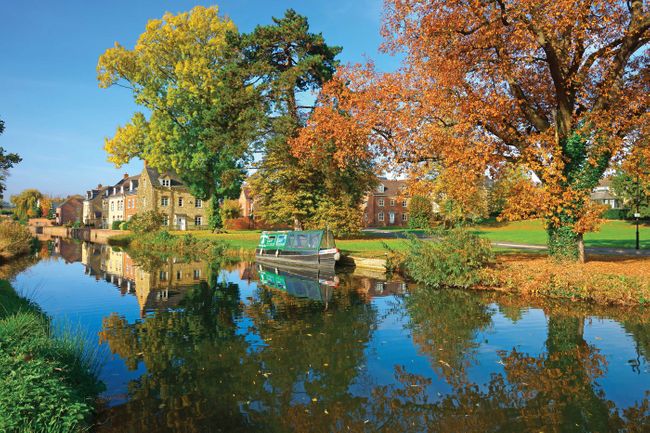
Canals are not greatly associated with the Cotswolds, but there are actually two, and they’re well worth exploring: the Thames and Severn Canal and the Stroudwater Navigation. The 56km pair, which, merging in Stroud, became known as the Cotswold Canals, were built in the 18th century to help transport goods up and down the Thames and Severn, before their closure in the 1920s.
The Cotswold Canals Trust restoration project to reopen the derelict canals has seen volunteers clearing towpaths, rebuilding walls and restoring locks. Visitors can help with the work – or by taking one the four gentle boat trips along the canal, with all funds going towards the canals’ restoration.
29. Culbone Church, Somerset
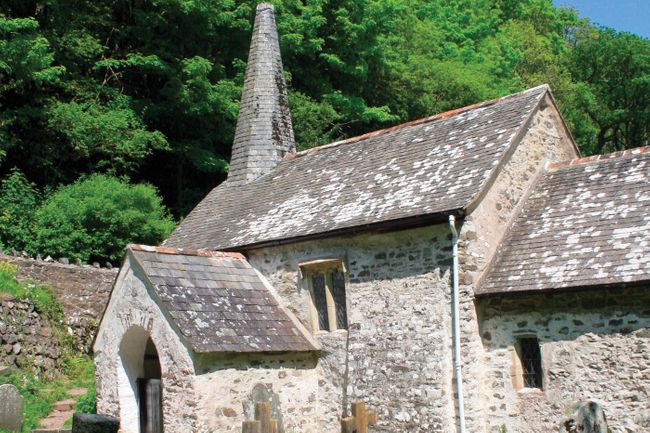
To reach the smallest parish church in England, you first have to walk for over 2.5km. through the woods of west Somerset Quite suddenly there’s Culbone Church below you, squatting in a clearing with its spire, set slightly askew, reaching hopefully towards the treetops.
It seats 33 worshippers at a pinch (the average congregation is about seven) and there’s no room for anything except the pews, a tiny wax-spattered harmonium squeezed into a corner, and that Norman font, so roughly carved that the marks of the stonemason’s chisel are still visible.
30. The Bays, Harris, Outer Hebrides
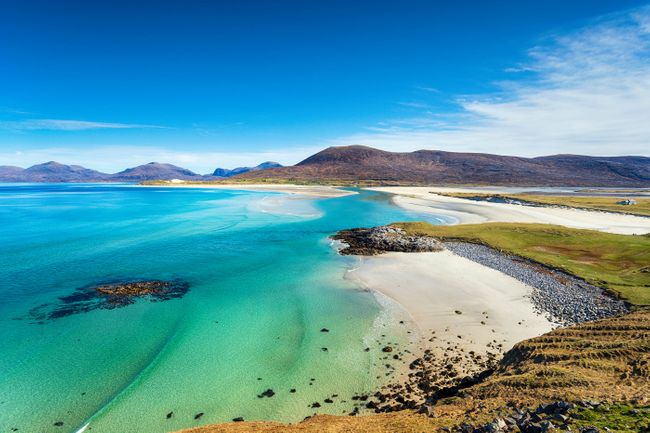
The Bays is the name given to the rugged, elemental east coast of Harris. Visit on a clear evening as dusk approaches and the ice-moulded rocks seem to change colour with every heartbeat while the small water pools catch fleeting slivers of light, appearing as giant glow-worms among the heather.
Several walks are signposted off The Bays coastal road that allow you to explore this violent beauty. You can park the car or hop off the bus, walk a circular route, following waymarkers over open land for up to 6km. A picturesque stretch of 2.5km links the township of Plocrapol with Scadabhagh.

